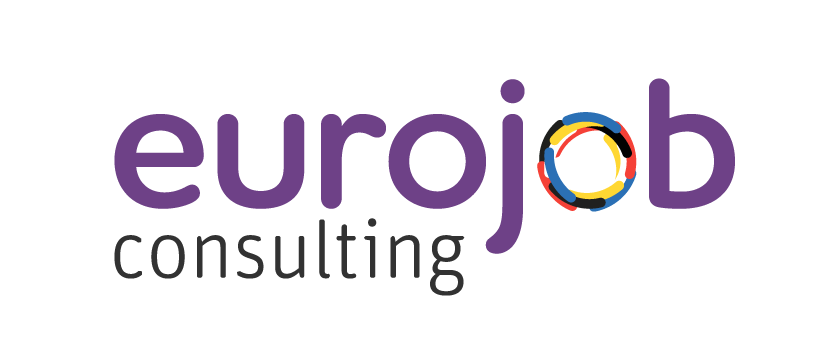Reducing recruitment costs by 45 % in Germany: Proven strategies

Recruitment costs in Germany include not only competitive salaries, but also expenses associated with the process of selecting and training new employees. By adopting specific strategies and using the right resources, companies can reduce their recruitment costs by up to 45 % while ensuring they attract and retain the best talent available.
2. Strategies to reduce hiring costs
3. Case study: Successful cost reduction in recruitment

Key characteristics of the German workforce
Germany boasts a highly educated and skilled workforce, with a strong emphasis on technical skills and vocational training. The dual education system, combining apprenticeships with classroom learning, produces well-rounded professionals ready to contribute effectively from day one. According to the Federal Statistical Office of Germany, in 2023, around 51 % of young adults participated in vocational training programs, highlighting the importance of this system in the German job market.
Challenges in hiring in Germany
Despite the advantages, hiring in Germany comes with its challenges. The labor market is competitive, with companies vying for top talent. For example, the German Federal Employment Agency reported that the average time-to-fill for a vacancy in 2023 was around 116 days, significantly longer than in many other European countries. Additionally, the regulatory environment can be complex, with strict labor laws and requirements that must be adhered to, such as the General Equal Treatment Act (AGG) and the Working Hours Act (ArbZG).
"The dual education system, combining apprenticeships with classroom learning, produces well-rounded professionals ready to contribute effectively from day one."
Lea Orellana-Negrin
Recruiter
Eurojob-Consulting

Demand for skilled workers
The demand for skilled workers, particularly in engineering, IT, and manufacturing, is high. In 2023, Germany had a shortage of 96,000 IT specialists, according to the Bitkom industry association. This shortage drives up salaries and competition, making it challenging for companies to attract and retain top talent without incurring significant costs.
Examples of companies facing hiring challenges
Siemens AG: One of Germany's largest engineering companies, Siemens has faced difficulties in filling specialized roles. They have invested heavily in their employer branding and apprenticeship programs to attract young talent. Siemens reported that, despite these efforts, some high-tech positions remain vacant for over six months.
SAP SE: As a global leader in enterprise software, SAP struggles with the high demand for IT professionals. In response, SAP has expanded its recruitment efforts to include remote positions, allowing them to tap into a broader talent pool across Europe and beyond. According to SAP’s career page, they offer extensive benefits and training programs to attract candidates, yet the competition remains fierce.
Leverage local recruitment agencies
Local recruitment agencies have an in-depth understanding of the German job market and can help identify suitable candidates quickly. By partnering with these agencies, businesses can reduce the time and resources spent on sourcing and screening candidates. For instance, DIS AG, a prominent recruitment agency in Germany, specializes in sectors like engineering, IT, and finance. According to their reports, clients have seen a reduction of up to 30 % in their hiring costs due to faster placement and better candidate matches.
Utilize online job portals and social media
Online job portals such as Indeed, StepStone and Xing are popular in Germany and can be cost-effective tools for reaching a large audience. These platforms allow companies to post job ads and search for candidates using specific filters. For example, StepStone reported that companies using their platform can reduce their time-to-hire by 25 % on average. Additionally, social media platforms like LinkedIn can also be valuable for sourcing and engaging with potential candidates. LinkedIn's Talent Solutions reported that companies using their platform experience a 30 % reduction in hiring costs due to the direct and efficient recruitment process.
Optimize your job descriptions and employer branding
Creating clear and compelling job descriptions can attract the right candidates and reduce the time spent on screening unsuitable applicants. Emphasize your company's unique selling points and benefits to stand out in a competitive market. According to a study by Glassdoor, companies with strong employer branding see a 50 % reduction in cost-per-hire and a 28 % reduction in employee turnover. An example is Bosch, which invests heavily in their employer branding and has successfully attracted top talent while reducing their recruitment costs.
Implement employee referral programs
Employee referral programs can significantly reduce recruitment costs by leveraging your existing workforce to find suitable candidates. These programs incentivize employees to refer qualified individuals from their network, leading to faster hires and a better cultural fit. Studies have shown that referred candidates often have higher retention rates. According to the Society for Human Resource Management (SHRM), companies can save up to $3,000 per hire when using referral programs. For example, Mercedes-Benz has a robust referral program that has helped them fill positions more quickly and at a lower cost.
Consider remote and flexible work options
The COVID-19 pandemic has accelerated the shift towards remote work, and many candidates now prioritize flexibility. By offering remote or hybrid work options, companies can widen their talent pool and reduce the need for physical office space, thereby lowering overhead costs. According to a report by McKinsey & Company, companies that offer remote work can save up to 30 % on operational costs. SAP SE, for instance, has expanded its recruitment efforts to include remote positions, allowing them to attract top talent from across Europe and beyond.

A real-life example
Atoss, a mid-sized tech firm, successfully reduced its hiring costs by 40 % over a two-year period by implementing a combination of strategic approaches. This case study highlights the specific steps they took and the measurable results they achieved.
Optimizing job descriptions and employer branding
Next is a company focused on optimizing their job descriptions and enhancing their employer branding. They worked with Glassdoor to revamp their company profile and job listings, emphasizing their innovative culture, competitive salaries, and career development opportunities. As a result, they saw a 35 % increase in the quality of applicants and a 50 % reduction in cost-per-hire. Glassdoor studies show that strong employer branding can reduce turnover rates by up to 28 %, leading to long-term savings.
Implementing an employee referral program
To further reduce recruitment costs, Company Aixtron implemented an employee referral program. By incentivizing current employees to refer qualified candidates, they were able to fill 25 % of their open positions through referrals. According to the Society for Human Resource Management (SHRM), referred candidates often stay longer and perform better, which was consistent with Company Aixtron’s experience. The cost savings per hire through referrals were approximately $2,500, considering reduced advertising and agency fees.
Offering remote and flexible work options
Recognizing the shift towards remote work, Company Aixtron offered remote and flexible work options. This approach not only widened their talent pool but also reduced overhead costs associated with office space. According to McKinsey & Company, companies offering remote work can save up to 30 % on operational expenses. For Company XYZ, this translated to annual savings of $150,000 in office rental and maintenance costs.
Leveraging online job portals and social media
Company Doccheck also leveraged online job portals such as Indeed and StepStone, as well as social media platforms like LinkedIn. These platforms enabled them to reach a broader audience at a fraction of the cost of traditional advertising. Indeed reported that their clients see a 30 % reduction in time-to-hire, while LinkedIn's Talent Solutions offer advanced targeting options, reducing unnecessary spending.
Measurable outcomes
The combined impact of these strategies resulted in significant cost savings for Company Aixtron. Over two years, they achieved:
- A 40 % reduction in overall hiring costs
- A 50 % improvement in the quality of applicants
- A 60-day reduction in time-to-hire
- Annual savings of $150,000 in office-related expenses

Jérôme Lecot




